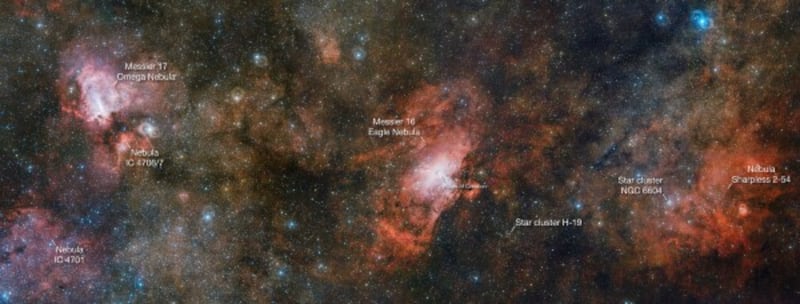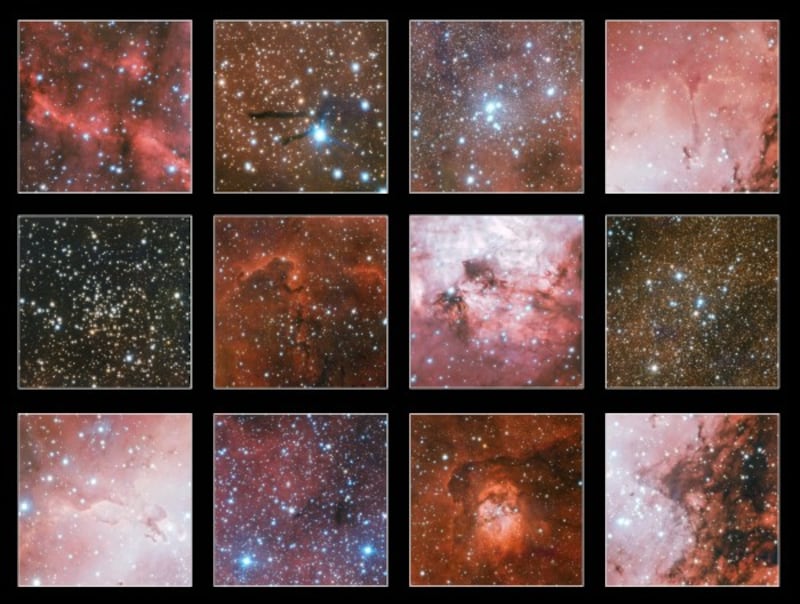Astronomers have created a breathtaking composite image featuring a trio of glowing interstellar clouds of gas in incredible detail and you will definitely want to see the picture in all its three-gigapixel glory.
Taken by the European Southern Observatory’s VLT Survey Telescope, the image shows the Sharpless 2-54 on the right, the Eagle Nebula in the centre and on the left is the Omega Nebula.

These three nebulae, which are about 7,000 light years away, make up just a portion of a vast complex cloud of dust, hydrogen, helium and other ionised gases from which new stars are created.
Sharpless 2-54 and the Eagle fall within the constellation of Serpens (The Serpent), while the Omega Nebula is in Sagittarius (The Archer).

“The three nebulae indicate where regions of this cloud have clumped together and collapsed to form new stars; the energetic light from these stellar newborns has caused ambient gas to emit light of its own, which takes on the pinkish hue characteristic of areas rich in hydrogen,” the ESO said in a statement.
British astronomer William Herschel first spotted a beaming star cluster in Sharpless 2-54 in 1784 but this dim gas cloud remained relatively unknown until American astronomer Stewart Sharpless saw it on photographs from the National Geographic Society–Palomar Observatory Sky Survey.
Both the Eagle and Omega nebulae were discovered by Swiss astronomer Philippe Loys de Cheseaux in 1745.
The final colour image, one of the largest ever released by the ESO, was created by stitching together dozens of pictures – each of 256 megapixels – taken by the telescope’s OmegaCAM camera.








